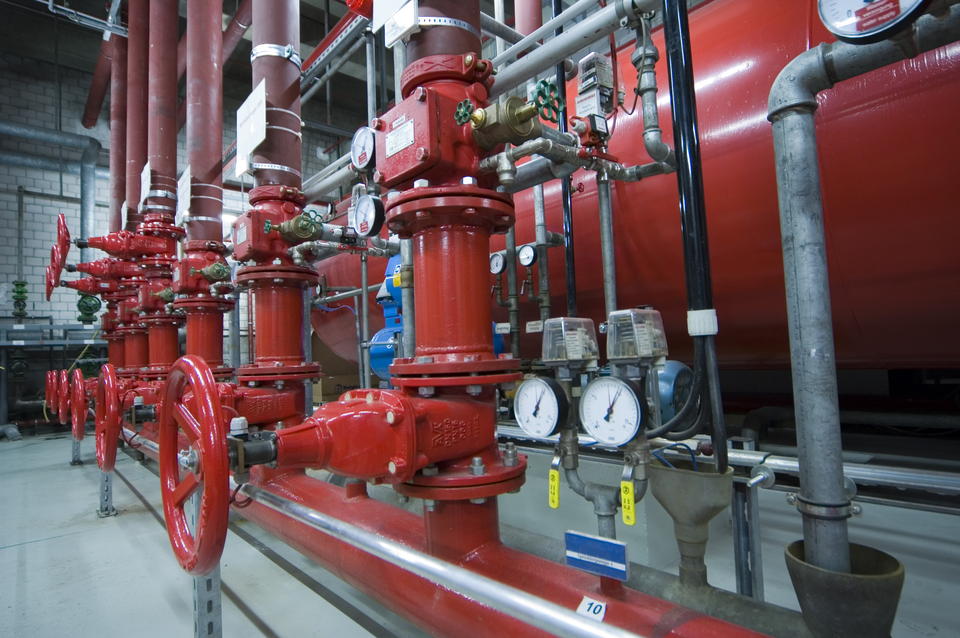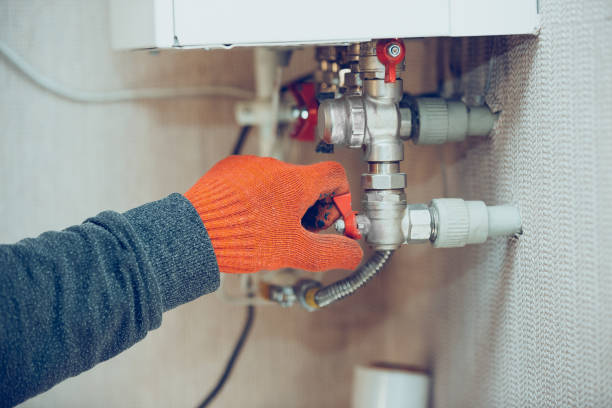Simple Advice for Rectifying Low Water Pressure in Your Home
Simple Advice for Rectifying Low Water Pressure in Your Home
Blog Article
What're your thoughts regarding Dealing with Low Water Pressure in Your Home?

Low tide stress in your home can be an irritating trouble, affecting every little thing from bathing to cleaning meals. If you're experiencing weak water flow, there are a number of possible causes and solutions to check out. In this guide, we'll talk about common reasons for low water pressure and useful steps to address the concern effectively.
Intro to Low Water Stress
Low water pressure takes place when the circulation of water from your taps, showers, and various other fixtures is weak than common. This can make daily jobs a lot more challenging and much less efficient. Comprehending the sources of low tide stress is essential to discovering the appropriate remedy.
Typical Root Causes Of Low Tide Stress
Pipeline Obstructions
In time, pipelines can end up being obstructed with natural resource, debris, or particles, limiting the circulation of water. This is a common concern in older homes with galvanized steel pipes.
Corrosion
Rust within pipes can lead to leaks and decreased water pressure. Rust build-up can tighten water flow, especially in aging plumbing systems.
Faulty Pressure Regulatory Authorities
Stress regulators are accountable for maintaining constant water pressure in your house. If they malfunction, it can result in low water pressure or unequal circulation throughout the house.
Municipal Water Issues
Occasionally, the problem exists outside your home. Local water supply concerns, such as main line leaks or upkeep work, can briefly minimize water stress in your area.
Exactly How to Diagnose Low Tide Pressure
Inspecting Taps and Components
Beginning by examining the water pressure at different faucets and fixtures throughout your home. If the problem is separated to details areas, it might suggest local issues.
Examining Pipelines
Inspect noticeable pipes for indicators of leaks, rust, or blockages. Take notice of any kind of unusual audios, such as knocking or rattling pipelines, which could suggest issues within the plumbing system.
Consulting with a Plumber
If you're not able to pinpoint the cause of low water pressure, consider employing a specialist plumber to perform a comprehensive assessment. They can determine underlying issues and advise appropriate solutions.
Do It Yourself Solutions to Fix Low Tide Stress
Cleansing Aerators and Showerheads
Mineral deposits can build up in aerators and showerheads, decreasing water flow. Get rid of and clean up these components consistently to enhance water stress.
Flushing Hot Water Heater
Sediment accumulation in the water heater can limit flow and decrease effectiveness. Purging the tank regularly helps eliminate sediment and maintain ideal efficiency.
Examining Pressure Regulatory Authority
Make certain that the pressure regulatory authority is working appropriately. Adjusting or replacing the regulator can assist recover appropriate water stress throughout your home.
Clearing Up Clogs in Water Lines
For small obstructions, attempt utilizing a plumbing serpent or chemical drainpipe cleaner to clear obstructions in pipelines. Be cautious when using chemicals and comply with security guidelines.
When to Call a Specialist Plumber
If do it yourself initiatives stop working to resolve the problem or if you suspect considerable plumbing issues, it's finest to look for assistance from a certified plumber. They have the proficiency and devices to attend to complex concerns safely and successfully.
Preventive Measures to Keep Water Stress
Routine Maintenance
Schedule routine upkeep for your plumbing system to stop issues such as deterioration, leaks, and blockages. Addressing small problems early can help stay clear of more substantial repairs later on.
Installing a Pressure Booster
Think about setting up a pressure booster pump to boost water stress in areas with continually reduced flow. This can be particularly helpful for multi-story homes or residential properties with high-demand components.
Monitoring Water Usage
Be mindful of water use habits and stay clear of overtaxing the plumbing system. Straightforward modifications, such as shocking showers and washing lots, can assist keep sufficient water stress.
Conclusion
Managing low tide stress can be discouraging, but determining the underlying reasons and executing ideal services can bring back optimal circulation throughout your home. Whether it's cleaning aerators, examining pipelines, or consulting with a plumber, taking aggressive steps can guarantee a stable supply of water for your daily needs.
FOUR WAYS TO FIX LOW WATER PRESSURE NOW
Turning on a shower or faucet only to find the water comes out in a sad, slow drizzle is never a good feeling. How exactly are you supposed to wash a pan or take a quick shower when it takes 10 minutes just to rinse off a little soap? The good news is that when your water pressure is bad, there's always a cause: typically one that can be easily fixed. Here are some of the most common causes of low pressure and what you can do to fix the issue:
DEBRIS AND MINERAL DEPOSIT BUILDUPS
If you notice low water pressure from just one or two of the fixtures in your house, the problem likely has to do with debris buildup. Water is full of minerals and other debris, all of which can accumulate in your pipes and on your fixtures. This can cause a blockage that affects how much water flows through. To fix this, try filling a small plastic bag with white vinegar, and use a rubber band to hang it around your showerhead or faucet. Let the head of the fixture soak for a few hours, and the vinegar should loosen the deposits.
WATER LEAKS
Leaks are another common cause of low water pressure. If water is flowing out of your plumbing through a hole or crack before it can reach your fixture, the pressure coming out of the faucet or showerhead will be lower. A plumbing professional is your best bet for finding and repairing a leak in your water supply pipes.
Leaks are another common cause of low water pressure. If water is flowing out of your plumbing through a hole or crack before it can reach your fixture, the pressure coming out of the faucet or showerhead will be lower. A plumbing professional is your best bet for finding and repairing a leak in your water supply pipes.
FOUR WAYS TO FIX LOW WATER PRESSURE NOW
Turning on a shower or faucet only to find the water comes out in a sad, slow drizzle is never a good feeling. How exactly are you supposed to wash a pan or take a quick shower when it takes 10 minutes just to rinse off a little soap? The good news is that when your water pressure is bad, there's always a cause: typically one that can be easily fixed. Here are some of the most common causes of low pressure and what you can do to fix the issue:
DEBRIS AND MINERAL DEPOSIT BUILDUPS
If you notice low water pressure from just one or two of the fixtures in your house, the problem likely has to do with debris buildup. Water is full of minerals and other debris, all of which can accumulate in your pipes and on your fixtures. This can cause a blockage that affects how much water flows through. To fix this, try filling a small plastic bag with white vinegar, and use a rubber band to hang it around your showerhead or faucet. Let the head of the fixture soak for a few hours, and the vinegar should loosen the deposits.
WATER LEAKS
Leaks are another common cause of low water pressure. If water is flowing out of your plumbing through a hole or crack before it can reach your fixture, the pressure coming out of the faucet or showerhead will be lower. A plumbing professional is your best bet for finding and repairing a leak in your water supply pipes.
Leaks are another common cause of low water pressure. If water is flowing out of your plumbing through a hole or crack before it can reach your fixture, the pressure coming out of the faucet or showerhead will be lower. A plumbing professional is your best bet for finding and repairing a leak in your water supply pipes.
A VALVE ISSUE
If you have low water pressure throughout your home, check your main shut-off valve to make sure it's completely open. You may also want to see if there's a pressure-reducing valve installed. If there is, have a plumber help you adjust the settings to get the pressure you're looking for.
OTHERS USING WATER
Believe it or not, your low water pressure could be caused by your neighbors. If you notice low pressure at certain times of day, it may be because you and the people living next to you have similar schedules - when everyone is showering at the same time, the pressure will be lower in every home. Low pressure throughout the neighborhood may also be caused by an issue with your municipal water supply. If that's the case, call the supplier to see if they're working on the issue.
https://www.rotorooter.com/blog/water-leaking/low-water-pressure-fixes/

As a fervent reader about Dealing with Low Water Pressure in Your Home, I was thinking sharing that article was beneficial. Don't hesitate to take a moment to share this article if you liked it. We take joy in your readership.
Click Here Report this page